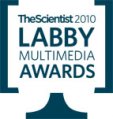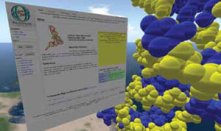
On her first tour of her freshman dorm at the University of California, Davis in the fall of 1992, neurophysiologist and science journalist Kirsten Sanford met an engineering student who talked to her about signing up for an electronic mail account—a term she had never heard before. At the time, the Internet was little more than green text on a black screen, and hardly anyone she knew used it. But Sanford was intrigued. “The idea that I could send messages immediately to people without having to stamp a letter was fascinating.”
By the time she graduated 4 years later, however, everything had changed. The World Wide Web had spread like wildfire. With new user-friendly browsers such as Internet Explorer and the now-defunct Netscape, pages could be embedded with images, music, and videos to present more visually appealing information. Search engines such as Yahoo, Excite, and Lycos (with Google looming in the horizon) offered a quick way to sift through the highly unorganized Web landscape for specific information. And an experimental version of PubMed, launched in January of that year, allowed PhD students such as Sanford to avoid spending hours upon hours roaming rows of bookshelves in search of scientific papers, sometimes to no avail.
Now, as a science communicator, the Web is Sanford’s main means of doing her job, including communicating directly with the public through live webcam science chats and maintaining Web sites for both her science journalism work and her radio show, This Week in Science. “I would not have been able to do what I do without the Internet,” she says. And she is not alone.

“All of science is terribly dependent on the Web,” says Joel Sussman, a structural biologist at the Weizmann Institute of Science in Israel. His most recent Web creation, Proteopedia, is a scientific wiki that allows virtually anyone to add or edit Web pages on the three-dimensional structures of biological molecules, as well as contribute information about their function and biological importance. Since the Web site’s launch in 2008, it has amassed more than 68,000 different molecular structures contributed and edited by hundreds of people, from top-notch structural biologists to high school teachers and students. A team of judges selected by The Scientist, including Sanford, as well as thousands of online readers, have chosen Proteopedia as this year’s Labby Award winner for Best Web Site.
This Web resource harkens to the broader scientific revolution in the age of Web 2.0. “The world is now incredibly smaller,” Sussman says. Research being carried out in remote places can quickly find its way to an incredibly diverse audience. Rapidly advancing Web-based technologies have made science a truly global effort, making it much easier for scientists to share their work with each other—and the rest of the world.
The wonder of the Web
This year marks the 20th anniversary of the first successful demonstration of the World Wide Web—an idea conceived in 1989 at the international physics research facility, CERN, in Geneva, Switzerland. It was borne out of the pressing scientific need to share data across a host of incompatible computers, Internet historian Ian Peter explains. “[It] was invented with quite altruistic visions of how you could link together and access any sort of information.” And though it took a few years for it to catch on—by the end of 1992 there were only around 2 dozen Web sites—the Web has since ballooned to an estimated 25 billion publicly searchable sites in 2009.
But even before the Web took off in the mid-1990s, biologists had already been taking full advantage of the Internet—the vast network of computers that supports the Web. One of the first online databases for nucleic acid sequences, GenBank, for example, was created in 1982 with funding from the National Institutes of Health. It was made available through a network linking academic institutions and provided hoards of genetic information to the entire scientific community at no charge, “embody[ing] this idea that science is an activity that puts results, data, and information in an open space,” says science historian Bruno Strasser of Yale University.
As the main depository for DNA sequences during the Human Genome Project, GenBank saw its inventory updated on a nearly daily basis throughout the project’s decade-long quest to decipher the human genetic code. It has since become the world’s “largest and most frequently accessed collection of experimental knowledge,” Strasser says, holding more than twice as many nucleotides as there are stars in the galaxy. The sequences stored within its digital walls have helped scientists spanning many disciplines to develop drugs and vaccines for a growing list of diseases. The data are used to create DNA barcodes to assess biodiversity, and are invaluable for gauging genetic variation within species. And all of the information is at the fingertips of anyone with Internet access and a Web browser.
Now, scientists around the globe are finding new and creative ways to take advantage of the Web’s worldwide reach. Proteopedia, for example, combines the open-source MediaWiki platform behind Wikipedia with novel 3D imaging Web applications to help scientists and lay people alike visualize the shapes DNA sequences form once transcribed and translated. Sussman, who participated in the creation of the first Web browser for the international protein database, the Protein Data Bank, more than a decade ago, aims to leverage the power of the huge online community to present complex protein structures. “It’s not just enough to have archival data,” he says. “You need to have the data in a form that people can understand without someone standing next to them explaining it.”
Crossing scientific boundaries
The overwhelming information deluge the Web has unleashed has both empowered and spoiled its users—nearly 2 billion people last year alone. For Jo Handelsman, a microbiologist at Yale University who’s leading the way in assessing the Earth’s microbial diversity, it’s the instant gratification the Web offers that has made it so appealing. “There’s all this information that’s suddenly at our fingertips in ways that we couldn’t have really dreamed of when I was a graduate student” in the early 1980s. And with resources such as Google Scholar, PubMed, and HighWire, it’s a lot easier than it used to be to search the vast body of scholarly literature spanning all academic fields.
Some argue that this ability to communicate at unprecedented speeds is partly responsible for the rise of scientific collaboration and coauthorship seen across scientific fields in the past decade. On the other hand, the Web also reduces the need to communicate with other scientists in order to access their data, Strasser says, eliminating one potential birthplace of collaborations. “Today when you download data that somebody else has deposited in the database, you hardly know who that person is, nor do you care,” he says. “The Internet is also a kind of lonely place.”
But the Web can also capture audiences once ignorant of science’s inner workings. “It’s allowing scientists who for so long were publishing within their own community—their academic community—to communicate with everybody,” Sanford says. And in some cases, it is the public who has used the Web to help scientists with their research. Fields like ornithology, for example, rely on enthusiastic amateur bird watchers keeping track of the migrations and movements of birds, and then sharing what they find, says Nathan Ensmenger, a professor of history and sociology of science at the University of Pennsylvania. Other Web projects aim to put the computing power of the millions of civilian computers connected to the Internet to good use, essentially creating a virtual supercomputer. One such project, known as Folding@home, provides its nearly half a million active users with special software that can process protein folding data while their computers are at rest.
There’s no question the Web has changed and will continue changing the way science is done, Peter says, which in turn will keep changing the world. “We’re in the early stages of some quite remarkable changes in the way in which humans live on this planet.”
“Proteopedia,” is a wiki resource that allows people to contribute to and edit the more than 68,000 pages containing information and three-dimensional structures of biomolecules. It was the creation of Joel Sussman, Jaime Prilusky, Eran Hodis, and colleagues at the Weizmann Institute of Science in Israel as well as two US institutions, who all thought “it would be wonderful if there were a way to make structures somehow understandable to a really wide community of scientists,” Sussman says.
